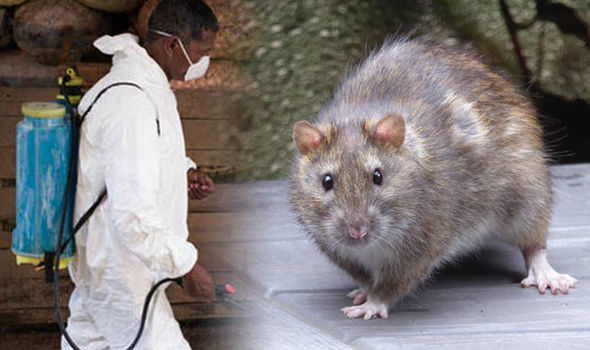
Prevalence of Lassa Fever in Nigeria; Main Facts, Causes, Symptoms, Prevention
Prevalence of Lassa Fever in Nigeria. Although it was first described in the 1950s, the virus that causes Lassa fever was not identified until 1969. It is a single-stranded RNA virus belonging to the Arenaviridae family.
Lassa fever is an intense viral hemorrhagic fever known to be endemic in a few West African nations, including Nigeria. As of June 9, 2017, a sum of 501 speculated cases, including 104 fatalities, had been advised since the beginning of the momentum Lassa fever episode season, in December 2016. Of all the reported cases, 189 have been further classified, with 175 laboratory-confirmed cases, including 59 deaths, and 14 probable cases (all deceased).
👉 Relocate to Canada Today!
Live, Study and Work in Canada. No Payment is Required! Hurry Now click here to Apply >> Immigrate to CanadaDuring the momentum Lassa fever flare-up, 17 Nigerian states (Gombe, Bauchi, Borno, Nasarawa, Cross-River, Taraba, Anambra, Edo, Enugu, Kaduna, Ebonyi, Kano, Kogi, Ondo, Plateau, Rivers, and Ogun) have revealed in any event one affirmed case. As of June 9, 2017, the flare-up was as yet dynamic in 9 states ( Kano, Bauchi, Cross-River, Edo, Nasarawa, Ondo, Plateau, Taraba, and Anambra).
About 80% of people infected with the Lassa virus do not have symptoms. One in five infections results in severe damage to several organs such as the liver, spleen, and kidneys. The fever is a zoonosis, which means that humans are infected through contact with infected animals. The animal reservoir, or host, of the virus, is a rodent of the genus Mastomys, commonly referred to as a “multiple-teat rat”. The infection does not make him sick, but he excretes the virus in his urine and feces.
The Lassa virus is named after the city in Nigeria where it was first isolated in 1969 from a nurse who fell ill after providing care, and who died of it after infecting two other health workers. It is a virus. It is endemic in several West African countries especially in Nigeria, where it infects 100 to 300,000 people per year, of which 5 to 6,000 die.
To date, there is no vaccine against this virus which represents not only a public health problem but which is also one of the agents potentially usable for bioterrorism.
See Also: History Of Lassa Fever In Nigeria
Main Facts about Lassa Fever
- Lassa fever is an acute viral hemorrhagic fever lasting one to four weeks that occurs in West Africa.
- Lassa virus is spread to humans through contact with food or household items contaminated with urine or rodent feaces.
- Human-to-human and laboratory transmission also occurs, particularly in hospitals where infection prevention and control measures are poor.
- Lassa fever is endemic in Benin, Ghana, Guinea, Liberia, Mali, Sierra Leone, and Nigeria, but it is arguably present in other West African countries as well.
- The overall case fatality rate is 1%. That of patients with severe forms can reach 15% in hospitals.
- Early supportive care, focusing on rehydration and symptomatic treatment, improves the chances of survival.
Symptoms of Lassa Fever
The clinical picture of Lassa fever is variable, from asymptomatic infection, which is very common (80% of cases), to severe hemorrhagic fever. The disease begins 6 to 21 days after infection with not very specific clinical signs: fever, vomiting, nausea, abdominal pain, headache, myalgia, arthralgia, asthenia.
In severe cases, symptoms worsen then, with the appearance of edema, hemorrhagic signs, pericardial and pleural effusions, and more rarely encephalitis.
The patient died against a background of hypotensive and hypovolemic shock and renal and hepatic failure.
👉 Relocate to Canada Today!
Live, Study and Work in Canada. No Payment is Required! Hurry Now click here to Apply >> Immigrate to CanadaLassa fever is extremely serious for pregnant women, frequently leading to the death of the mother and systematically to that of the fetus.
See Also: Lassa Fever in Nigeria; History, Outbreaks, Causes, Symptoms, Treatment
An Endemic Virus In West Africa
Lassa fever is endemic in Nigeria, Guinea, Liberia, and Sierra Leone, where disease outbreaks occur regularly. The incidence of the disease has increased in recent years, as political unrest has resulted in an influx of refugees into the affected areas.
Sporadic cases have recently been reported in countries considered free for Lassa fever, such as Mali, Ghana, Côte d’Ivoire, and Burkina Faso. The virus is now also rife in Benin, where two epidemics were recorded in 2014 and 2016. At last, Lassa fever is the most now and again imported hemorrhagic fever in northern nations, with more than twenty cases recorded since 1969.
A Small Domestic Rodent, The Reservoir Of The Virus
The main reservoir of the Lassa virus is a small peri-domestic rodent called Mastomys natalensis. The virus is transmitted to humans through contact with animal faeces (urine, faeces). Many of these rodents live near or even inside homes, and their infection rate can be up to 80%.
Contacts between humans and the infected reservoir are therefore very frequent in villages, and the number of infected people in individuals living in endemic areas can thus reach 50%. The virus can also be transmitted from human to human, primarily in a hospital setting, through skin-to-mucous membrane contact with a patient’s body fluids.
See Also: Coronavirus in Nigeria; Overview, Causes, Symptoms, Prevention and Treatment
Treatment And Vaccines for Lassa Fever
An Antiviral Available But Unsuitable For The Field
Till date, there is only one molecule used against the Lassa virus. It’s about the ribavirin, a broad-spectrum antiviral against RNA viruses used in particular for the treatment of hepatitis C.
Unfortunately, this treatment does not represent a satisfactory solution to the problem posed by Lassa fever in endemic countries: its effectiveness remains fairly poorly demonstrated and should be administered very soon after infection.
However, the clinical signs of the onset of the disease are similar to those observed for other pathologies, such as malaria or dysentery, very frequent in these areas of the world. Involvement of the Lassa virus is therefore often not considered until several days after the onset of symptoms, and ribavirin, in the rare cases where it is available in the field, is most often administered too late to be effective.
See Also: 20 Most Popular Medicinal Plants in Nigeria and Their Uses
Promising Vaccine Candidates Understudy
Lassa fever is a potentially severe viral hemorrhagic disease caused by the Lassa virus. It is characterized initially by fever and malaise, followed by gastrointestinal symptoms and in severe cases, by hemorrhage, shock, and multiple organ failure.
Many people in the villages know that at harvest time rats and mice come to eat the grains. Some rats or mice carry the Lassa fever virus in their pee and poop. Without being careful, you can catch Lassa disease by touching the pee and droppings of rats. People who care for Lassa patients can also catch their disease from touching them.
Traditional healers are familiar with Lassa fever. Unfortunately, there are no traditional remedies that work for this disease. If a traditional healer thinks that the patient has Lassa fever, he should send the patient to the nearest hospital or clinic for treatment. By doing this the whole community works together to protect the population.
Lassa has difficulty passing from one person to another. Many may be ill with Lassa fever, but very few will die, perhaps one in a hundred. Most sufferers, about 8 in 10, feel bad as if they have caught a cold. They are tired or weak, have pain all over, and have a fever. For some, the disease is more serious. We cannot know who is going to have a serious or a mild illness. There are medicines to treat Lassa fever and they can be found in clinics and hospitals for this disease.
The best way to protect yourself against Lassa fever is to get to know it and explain it to friends and family. One can save the life of a relative or a friend by explaining this disease. It is very important to avoid rats and mice and their poop and pee.
Everyone should store food in boxes safe from rats and mice. Houses must be kept clean because rats and mice come to eat in the garbage cans. In villages where people eat rats, it should be stopped because rats and mice can give Lassa fever.
In hospitals and health centers, staff caring for patients, especially if they have Lassa fever, must protect themselves to avoid catching Lassa fever. Patients with Lassa fever should be kept in separate rooms from other patients and other people visiting the sick.
Lassa fever is an acute viral hemorrhagic fever. The virus is spread to humans through contact with food or household items contaminated with urine or rodent droppings. Human-to-human transmission of infection or in laboratories is also possible. Lassa fever is endemic in Nigeria and other countries in West Africa; it causes epidemic outbreaks almost every year in different parts of the region, with annual peaks from December to June.
Overall, a downward trend emerges from the current assessment of the risk of an outbreak of Lassa fever in Nigeria. In light of this development, current control measures remain focused on preparedness and response in general, but the risk of large outbreaks is not very high.
However, careful monitoring, active case finding, contacts, laboratory support, and disease awareness (in communities and health workers) continue. Although there is the constant movement of populations between these Nigerian states, the large-scale transmission of the disease or spread of outbreaks has not been reported. However, sporadic cases from Nigeria have been reported from Togo and Benin.
World Health Organisation (Who) Advice
Avoidance of Lassa fever depends on advancing great “network cleanliness” to keep rodents from entering homes. In healthcare settings, staff should always apply standard infection control measures when caring for their patients, regardless of the suspected diagnosis.
On rare occasions, travelers from areas endemic for Lassa fever have exported the disease to other countries. Although other tropical infections are much more common, the diagnosis of Lassa fever will be considered in patients with fever returning from West Africa, especially if they have been in rural areas or hospitals. In nations where Lassa fever is known to be endemic. Medical services laborers seeing a speculated quiet that may have Lassa fever ought to promptly contact nearby and public specialists for exhortation and to organize research facility testing.






